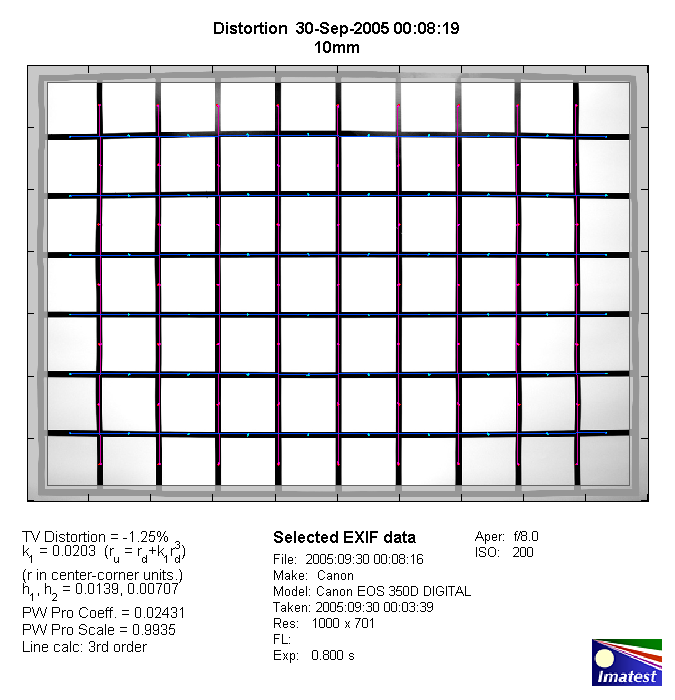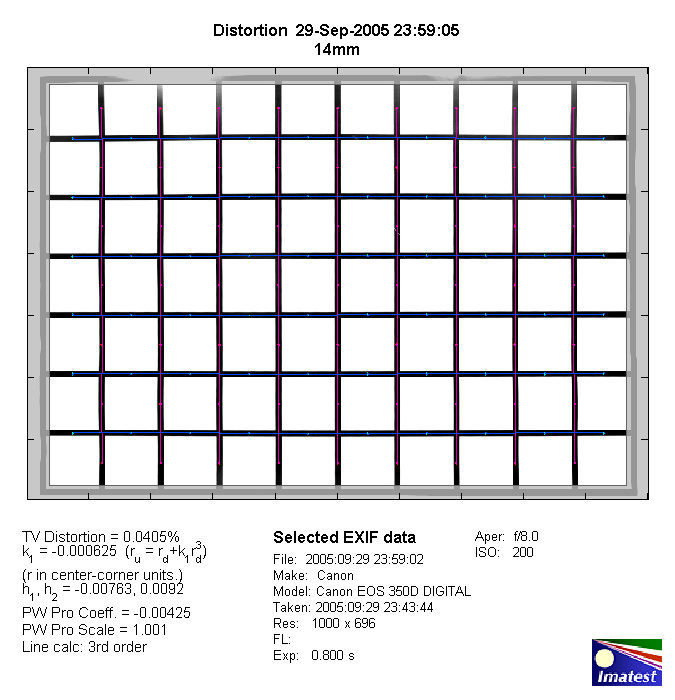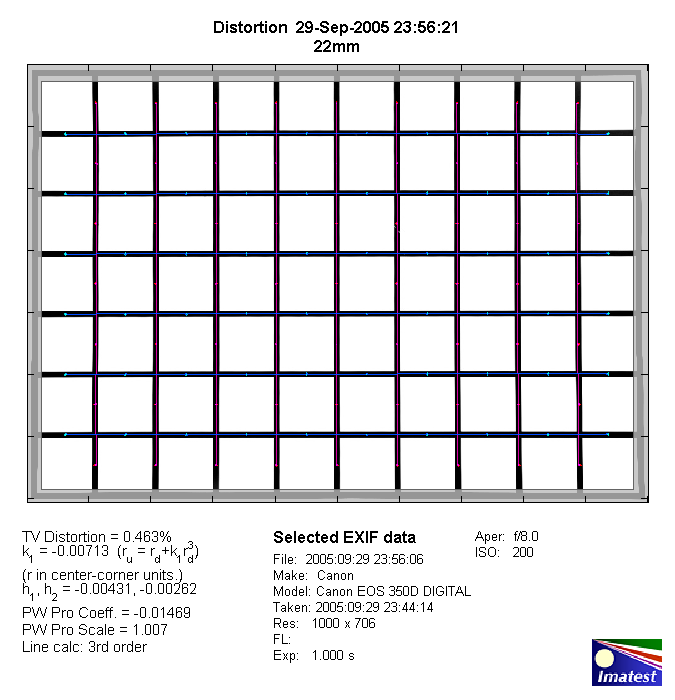|
Canon EF-S 10-22mm f/3.5-4.5 USM - Review / Test Report - Analysis |
|
Lens Reviews -
Canon EOS (APS-C)
|
|
Page 2 of 3

Distortion
The EF-S 10-22mm f/3.5-4.5 USM exhibited a quite impressive performance here and
that's not only for an ultra-wide zoom but also in absolute terms - at 10mm there is
slight barrel distortion which evens out at about 14mm. At 22mm there is marginal
pincushion distortion.
10mm:

14mm:

22mm:

The chart above has a real-world size of about 120x80cm or 40x the focal length.
Expect more distortions towards closer focus distances.
Vignetting
The EF-S 10-22mm is a native APS-C lens with a reduced image
circle so it is not surprising that vignetting is a more pronounced
than with full frame lenses. Wide-open vignetting is at about 1.2EV
throughout the range but at f/5.6 the problem is already reduced to
very acceptable levels.

MTF (resolution)
The lens produced a very good performance in the lab. The center resolution
scratches, maybe even exceeds the limits of the 8MP sensor of the EOS 350D
(Digital Rebel XT). The borders and even the extreme borders are
generally good except at 22mm where they're a little soft at wide-open
aperture. Stopping down does marginally improve the performance at 10mm
and 14mm but at 22mm the border quality can be lifted good levels at f/5.6
and even very good levels at f/8. Diffraction effects reduce the performance
from f/8 onwards. All-in-all very impressive results here.
Please note that the MTF results are not directly comparable across the different systems!
Below is a simplified summary of the formal findings. The chart shows line widths per picture height (LW/PH) which can be taken as a measure for sharpness.
If you want to know more about the MTF50 figures you may check out the corresponding Imatest Explanations
Chromatic Aberrations (CAs)
The EF-S 10-22mm produced another surprise regarding chromatic aberrations (color shadows at harsh
contrast transitions) - for an ultra-wide lens they can be considered as quite low. In absolute
terms CAs can be noticeable at 10mm and 14mm where they exceed an average pixel width of 1 pixel at
the borders. This is still very respectable here. CAs can be corrected via imaging tools.

|